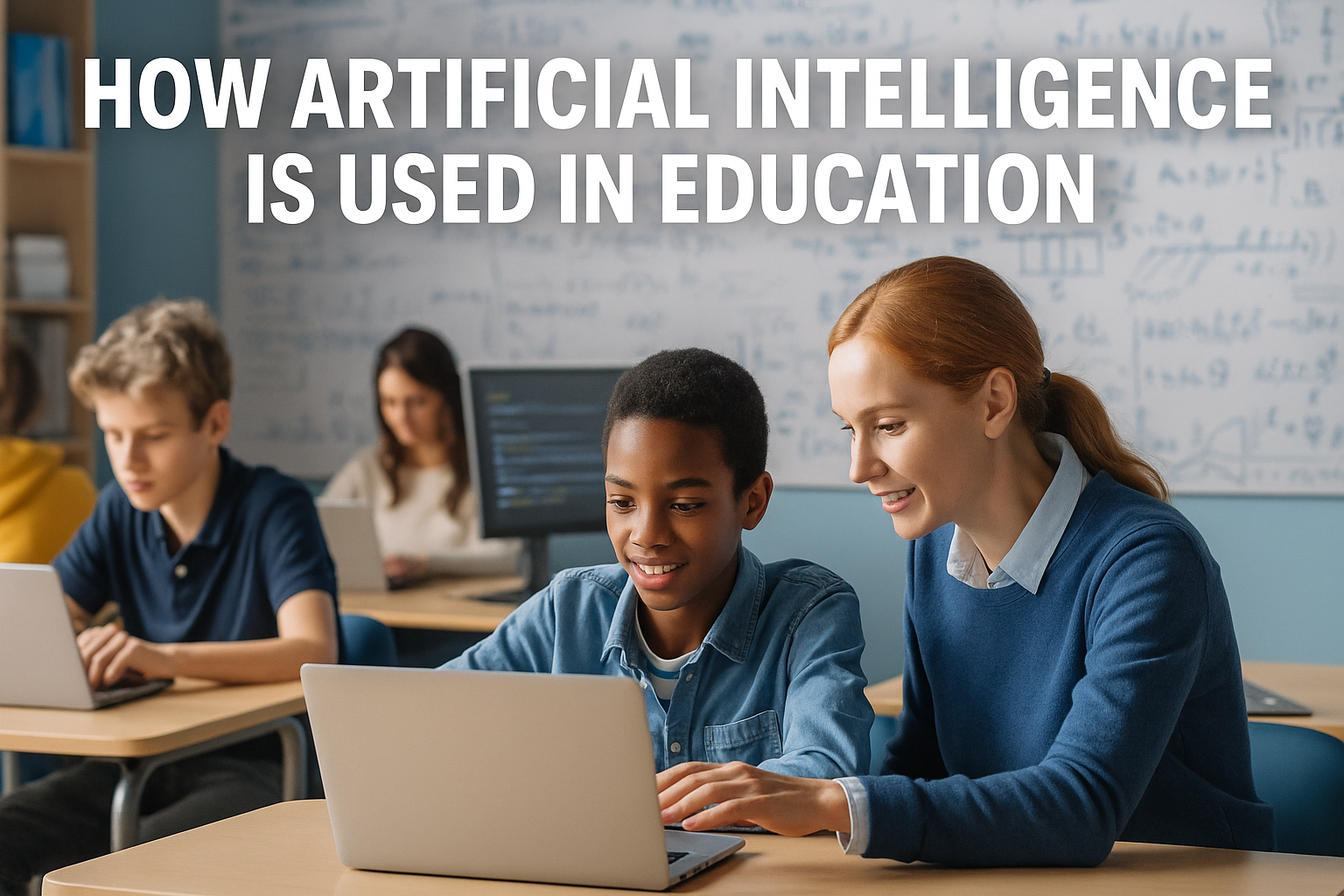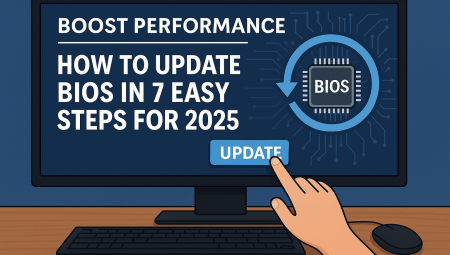What Is AI in Education?
Artificial intelligence (AI) in education refers to the integration of machine learning, natural language processing, and data-driven algorithms into teaching and learning processes. It allows systems to adapt, predict, and personalize educational content and interactions.
From early learning to graduate-level research, AI is revolutionizing how we teach and how students absorb knowledge.
Benefits of AI in Education
AI is not just a futuristic concept—it’s already transforming classrooms in meaningful ways:
-
Personalization: AI adjusts difficulty levels and content based on individual learning pace and style.
-
Efficiency: Automates repetitive tasks like grading and feedback, giving teachers more time.
-
Scalability: Enables one tool to support hundreds or thousands of students simultaneously.
15 Real-World Applications of AI in Education
-
Intelligent Tutoring Systems
Tools like Carnegie Learning or Squirrel AI simulate one-on-one human tutoring using adaptive responses. -
AI Writing Assistants
Platforms like Grammarly and QuillBot help students improve grammar, clarity, and writing fluency. -
Adaptive Learning Platforms
Programs such as DreamBox or Knewton use AI to tailor lessons and quizzes in real time. -
Automated Grading
AI can grade multiple-choice, short answer, and even essay responses—saving hours for educators. -
Virtual Mentors & Coaches
Chatbots like Jill Watson (from Georgia Tech) answer student questions 24/7 in online courses. -
Early Dropout Prediction
Machine learning identifies students at risk by analyzing attendance, grades, and engagement data. -
Language Learning AI
Apps like Duolingo adapt to user performance and pronunciation for faster retention. -
AI in Special Education
Tools like AI speech-to-text software support students with dyslexia or physical disabilities. -
Gamified Learning
AI-powered platforms create personalized challenges and rewards to boost engagement. -
Real-Time Feedback Systems
Students receive instant feedback on writing, speaking, or coding assignments. -
Plagiarism Detection
Turnitin and Copyleaks use AI to scan and compare text across vast content databases. -
Personalized Curriculum Planning
AI tools can recommend learning paths and modules tailored to each student’s goal. -
Voice-Activated Study Helpers
Tools like Alexa or Google Assistant can now quiz students or remind them of deadlines. -
AI Essay Evaluation
Systems analyze structure, coherence, and relevance to provide structured improvement tips. -
Learning Style Analysis
AI observes behavior to determine if a student is visual, auditory, or kinesthetic—and adapts accordingly.Challenges and Concerns of AI in Education
Despite its potential, AI integration in education brings notable challenges:
-
Data Privacy Risks
AI systems often require access to sensitive student data. Without strict privacy policies, personal information may be misused. -
Equity and Access
Not all students have equal access to AI-powered tools. This could widen the digital divide, especially in underserved regions. -
Teacher Displacement Fears
Some fear AI will replace educators. While unlikely, automation of tasks like grading can alter traditional teaching roles.
Educators and policymakers must ensure AI tools supplement—not supplant—human connection and creativity in classrooms.
Future Trends in AI Education Tech
AI is just getting started. Here’s what’s on the horizon:
-
AI + VR Integration
Imagine virtual science labs or historical simulations guided by intelligent tutors. Immersive, adaptive learning experiences are becoming reality. -
Emotional AI
Systems that detect student emotions via facial expressions or voice tone can adjust content delivery for engagement or empathy. -
AI-Powered Career Counseling
Tools that analyze a student’s performance and interests to suggest career paths or learning tracks.
These developments could make education more interactive, responsive, and purpose-driven.
Ethical Considerations of Using AI in Schools
With power comes responsibility. Ethical use of AI in education includes:
-
Avoiding Algorithmic Bias
AI must not favor or exclude students based on race, gender, or ability. -
Ensuring Human Oversight
Teachers should always have final say in assessments and student evaluations. -
Consent and Transparency
Students and parents must understand what data is collected and how it’s used.
Schools need guidelines and accountability structures to ensure that AI enhances rather than harms education.
How Educators Can Adapt to AI Technology
Teachers are not being replaced—but they do need to evolve. Steps they can take include:
-
Ongoing Training: Learn how AI tools work and how to apply them effectively.
-
Blended Learning Models: Mix traditional instruction with AI-driven platforms for personalized results.
-
Digital Literacy for Students: Teach learners how to use and question AI systems responsibly.
Professional development in this area is no longer optional—it’s essential.
FAQs About AI in Education
Q1: Will AI replace teachers?
No. AI is a tool to support teachers, not a replacement. The human element in education remains irreplaceable.Q2: Is AI only useful for tech-savvy schools?
While implementation requires infrastructure, many platforms are built for ease of use and accessibility.Q3: Can AI help with student mental health?
Some systems flag behavior patterns linked to stress or disengagement, enabling early support.Q4: What are the downsides of using AI?
Potential downsides include data misuse, over-reliance on automation, and the loss of human touch.Q5: Is AI affordable for schools?
Costs vary. Some platforms are free or freemium; others require investment but offer long-term savings in time and resources.
Conclusion: AI as a Partner, Not a Replacement
Artificial intelligence is reshaping education in ways unimaginable a decade ago. From smarter tutoring systems to real-time feedback, it’s making learning more personalized, efficient, and accessible.
But for AI to reach its full potential, schools must adopt it ethically, equitably, and humanely. Teachers will always play the central role—but now, they have smarter tools to help more students succeed.
🔗 External Resource: UNESCO – Artificial Intelligence in Education
-



